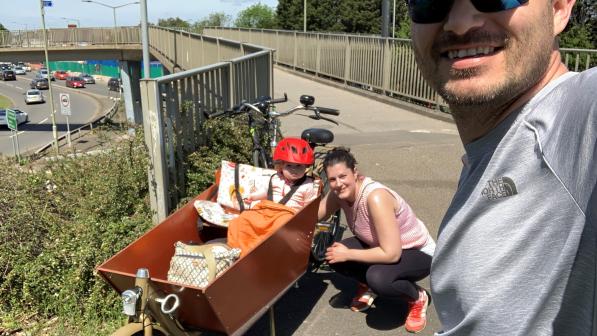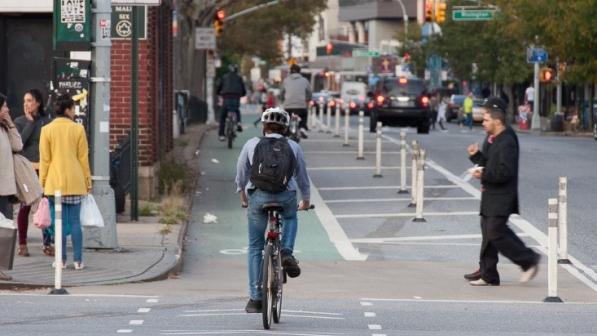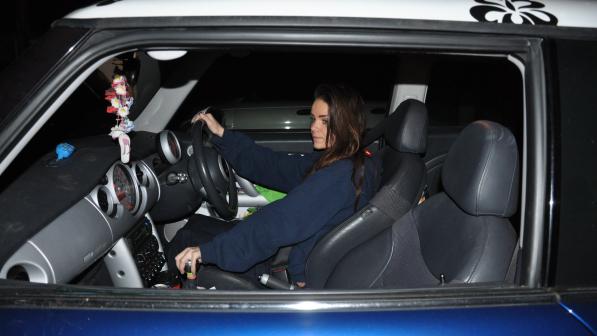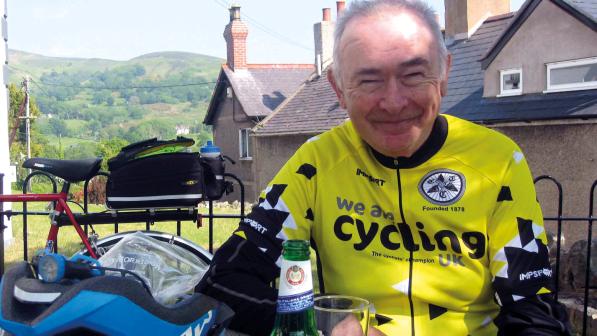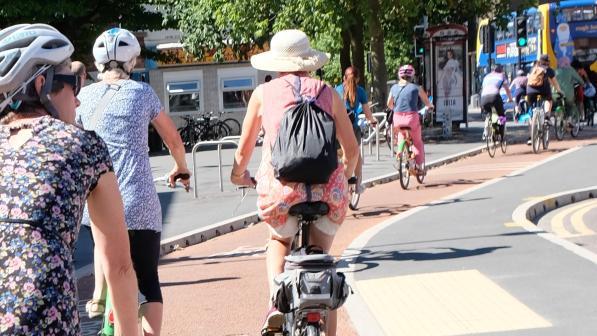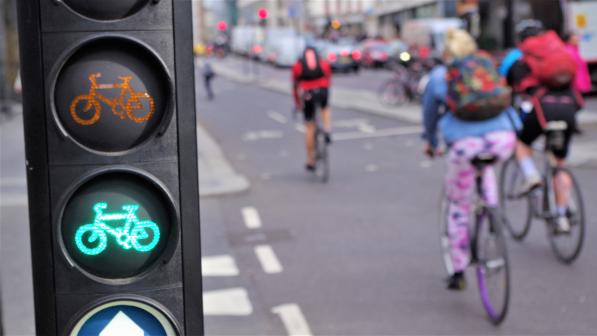What kind of awareness campaigns really help improve road users' behaviour?
Much of the good practice we advocate for public awareness campaigns reflects the findings of a 2009 study of several successful initiatives targeted at certain behaviour (these included speeding and green travel, but the range also covered issues un-related to transport). Most salient to the tactics Cycling UK supports, the authors highlighted: sound research, accurate targeting, non-judgemental attitudes and a positive approach.
Below we set out the principles of good practice that apply to all driver/cycle awareness campaigns in any format, e.g. online, videos, posters etc., and whoever launches them (i.e. national or local government, the police or other agencies).
Good practice check-list: awareness campaigns should:
Be informed by the issues we highlight in our article on what drivers need to know, when promoting cycle safety.
Be positive in tone and promote good behaviour: people are known to be more receptive to positive messages than judgmental, lecturing and/or negative ones.
Adopt a single, simple and memorable message, e.g. ‘Think once, think twice, think bike’, from the Department for Transport’s Think! campaign to make drivers more aware of motorcyclists.
Either convey positive messages to both drivers and cyclists about sharing the roads; or
If aimed at problem behaviour, deliver simple memorable messages to one group or the other, based on an accurate understanding of why those behaviours occur.
Reflect fact: i.e. principally that cyclists do negligible harm to other road users in comparison with motor vehicles; and are more likely to be injured and less likely to be at fault in road traffic collisions than the other parties involved (almost always motor vehicles).
Avoid simplistic negative stereotypes and victim-blaming: this only serves to reinforce the unfounded attitudes that all too many drivers hold to the detriment of cyclists and cycling.
Bad practice check-list: awareness campaigns should not:
Be judgmental, lecturing or negative: adults resent being lectured about their behaviour, even from ‘authoritative’ figures, particularly if they are not guilty of it.
Be multi-purpose/multi-targeted, i.e. trying to address problem behaviours among drivers and cyclists alike in the same campaign (e.g. ‘Drivers and Cyclists are More Alike than you Think’, DfT 2012).
Campaigns that try to address problem behaviours amongst cyclists and drivers simultaneously create a false equivalence between the offences of the two groups, and exaggerate the harm that people who cycle have the potential to cause.
In Cycling UK’s experience, this is an ineffective approach with too many targets, both in terms of road users and messages. It is usually adopted in a misguided bid to be seen to be even-handed and avoid criticism from motoring groups.
Be untruthful, evasive, exaggerate, and/or ‘victim blame’: as mentioned, it is inaccurate to suggest that cyclists share at least equal (if not greater) responsibility for their own collisions; and it is unfair to portray their offending as more dangerous than it truly is. (Note: Cycling UK fully supports responsible and lawful behaviour by all road users, and does not condone offending behaviour by cyclists).
‘Shock tactics’ are, therefore, most appropriate for campaigns against genuinely hazardous behaviour (e.g. speeding by car drivers), but they are not appropriate for messages aimed at cyclists. Equally, road safety campaigns should not exaggerate the efficacy of personal safety equipment, such as helmets.
Pander to negative stereotypes: i.e. suggest, even implicitly, that all cyclists ride on the pavement and jump red lights. Again, this approach is often adopted merely for PR/political reasons, but only serves to reinforce negative attitudes towards cycling while offending responsible cyclists who are in the majority.
Case studies

Good practice: ‘What Matters Most’ (Safer Roads Partnership in West Mercia, 2013)
Launched in March 2013 but still online, ‘What Matters Most’ is a publicity campaign and information resource focussing on driver distractions. Although it targets all road users, it emphasises the needs, concerns and safety of cyclists in particular.
This largely sound campaign homed in on the simple errors and poor decisions made by drivers that can put cyclists at risk.
Most of the messages and graphics are simple, focussed, well-communicated, do not lay blame or make any explicit or implicit judgements about cyclists’ behaviour.
For example, one poster asks drivers to think about whether it is more important to make a call on a mobile or eat a sandwich at the wheel than see a cyclist; and another asks whether impatience, tail-gating or quick overtaking matters more than leaving a cyclist plenty of room (poster left).
Bad practice: THINK! Hang Back (DfT, 2016)
Regrettably, THINK!’s ‘Hang Back’ campaign is, in our view, a classic example of a ‘victim-blaming’ approach.
Designed, no doubt with good intentions, to alert cyclists to the risks of ‘left hooks’ from lorries, it advised them against riding between two colliding objects.
We objected primarily because the message implies that if a cyclist finds themselves between a lorry and a kerb in the vicinity of a junction, it is their fault if they are crushed should the lorry turn left.
It is profoundly misleading to suggest this because: cyclists do not necessarily choose to put themselves in such a position (the lorry might have overtaken them); and drivers ought not to endanger others by their manoeuvres and should never be absolved of responsibility, even implicitly. Designing out lorry cab ‘blind spots’ is a crucial issue here too, as is junction layout.
Vehicle stickers
Vehicle stickers are often used to warn cyclists not to undertake lorries. Again, Cycling UK believes that all bodies with a road safety remit, including local and national government, must promote and support good practice, i.e. messaging that is clear, non-judgemental and never misleading.
Vehicle stickers: key principles
Warnings are more effective than commands, e.g. ‘Watch Out’ rather than ‘Stay Back’. ‘Stay Back’ is good advice to any cyclist approaching a large vehicle from behind, but on a sticker it may give drivers the false impression that cyclists are breaking the law if they undertake or overtake them. It also implies that it is a cyclist’s responsibility not to put themselves in this position rather than a driver’s responsibility to look out for them.
Warning stickers should only be used on the rear of high-cab lorries (i.e. vehicles with genuine ‘blind spots’). They should not be used on buses, small vans or taxis, i.e. vehicles whose drivers have adequate vision of the road about and should have no difficulty being careful in the presence of cyclists/ pedestrians.
Good and bad examples:[1]

Good examples:
The sign on the far left clearly warns cyclists against undertaking a lorry.
The ‘Watch Out’ sticker in the middle uses easily understood imagery – i.e. the iconography of internationally understood road signs – rather than relying on words. This means that cyclists, including those whose first language is not English, can understand it quickly and easily.
It gets its message across clearly but without being scary, or suggesting that it is illegal to pass a vehicle on the left-hand side. Also, being two-dimensional, it is not obvious whether the cyclist is acting foolishly or staying back – it is a genuine, non-judgemental warning.
Bad example:
This notice on the right, based on a prohibitive traffic sign, gives drivers the false impression that cyclists passing on the left side are lawbreakers. As a result, they may not drive with as much care as they should and, in the event of a collision, blame the cyclist even though there is a clear duty of care for drivers to look out and not turn across the path of cyclists at junctions.
Funding awareness campaigns
Funding decisions on road safety awareness campaigns should be based on:
- An accurate understanding of the scale of the problem in question, and/or the safety benefits of tackling it (as explained above);
- The need to respect the place of cyclists in the hierarchy of road users – i.e. above motorised transport.
Awareness + enforcement activity
There is little evidence to suggest that awareness campaigns change behaviour on their own. To maximise their impact, therefore, they need to interact synergistically with enforcement activity.
While awareness campaigns help make people understand why they need to behave in a certain way, vigorous enforcement seals public acceptance, and ensures that those who still ignore the messaging will be suitably penalised.
This is a key lesson from the Government’s long-term campaign to tackle drink-driving through publicity and linked enforcement. We very much commend the steep drop in drink-drive deaths since 1979 (-85%), and the marked change in public attitudes that the DfT verified in its survey to mark the campaign’s 50th anniversary back in 2014.
It is with some concern, therefore, that Cycling UK notes that provisional figures for 2016 saw a ‘statistically significant’ rise in fatalities, KSI and the total number of collisions and incidents where at least one driver was over the alcohol limit. Drink-drive awareness or enforcement – or both – seem to be weakening somehow. Dwindling numbers of roads police may well be a factor.
Good practice case study: ‘Operation Close Pass’, West Midlands Police

In 2016, the West Midlands police developed ‘Operation Close Pass’, an exemplary education/enforcement campaign targeting drivers who overtake cyclists too closely.
The operation, which is ongoing, involves intercepting drivers who fail to give a plain clothes police officer on a bike enough room, and pulling them aside for a demonstration of safe passing distances on an illustrated ground-mat. Repeat offenders, those who drive dangerously close, and those who decline the “chat on the mat”, however, may still be charged.
By September 2017, the force had pulled over at least 200 offenders, while reports of close passes halved. In a news release (September 2017), they also noted that: “The number of cyclists involved in serious road smashes in the last year has dropped by 20 per cent compared to the previous 12 months.”
Since the launch of the scheme, Cycling UK has crowdsourced funding for similar mats and supplied them to most other forces in the UK through our Too Close for Comfort campaign. Several are now putting the mats enthusiastically to use.
Road safety education in school / college
Cycling UK strongly supports the argument that schools and colleges can provide a vital learning ground for road safety. We believe that they should teach children and young people about responsible road use, and promote positive messages about cycling and cycle safety.
PSHE lessons are a good opportunity to do this, with lessons supported by resource packs that include positive material about taking particular care of cyclists and pedestrians. This would benefit children from their earliest stages of development right up to their teenage years, when group-based peer discussions about road safety help offset the otherwise ‘solo’ nature of learning to drive.
It is unfortunate, therefore, that some schools present such a negative image of cycling, and even take a punitive attitude – i.e. by banning it rather than addressing the local hazards that affect it (e.g. bad driving from members of the school community). We even know of instances where schools have threatened to confiscate the bikes of children who arrive without helmets.
There is no excuse for reinforcing debatable, prejudicial road safety messages that make cycling seem like an extremely dangerous way of commuting to and from school, so we urge the Department for Transport to do what it can, jointly with the Department for Education, to promote positive messages about cycling and cycle safety in schools.
- The above recommendations were among 80 we made in our 'Cycle safety: make it simple' response to the Department for Transport's Cycle Safety Review (June 2018).
[1] The wording on the far left-hand image from Transport for London (TfL) was agreed with London Cycling Campaign (LCC) in 2006. The other image won a national design competition for an easily understood image.
